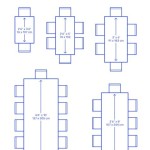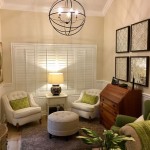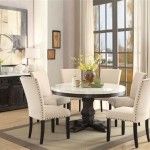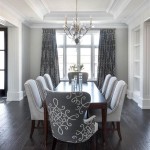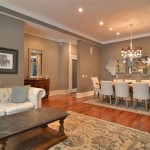Small Storage Cabinets: A Practical Solution for Dining Room Organization
Dining rooms often serve as more than just eating spaces; they can be hubs for family gatherings, homework sessions, and even temporary home offices. Consequently, the efficient storage of various items, from tableware and linens to serving utensils and even occasional office supplies, becomes paramount. However, not all dining rooms boast ample built-in storage. In such cases, small storage cabinets emerge as versatile and practical solutions, providing much-needed space without overwhelming the room's aesthetics or functionality. These cabinets, available in a wide array of styles, materials, and configurations, offer a targeted approach to decluttering and organizing the dining area.
The appeal of small storage cabinets lies in their ability to seamlessly integrate into existing decor while providing a designated space for items that would otherwise clutter countertops, tables, or other surfaces. They can be strategically placed in otherwise underutilized areas, such as corners or along walls, maximizing the room's potential without sacrificing valuable floor space. The modular nature of many small storage cabinet designs also allows for custom configurations, enabling homeowners to tailor their storage solutions to meet specific needs and preferences. This flexibility ensures that the cabinet not only serves its primary purpose but also complements the dining room's overall style.
Optimizing Dining Room Space with Strategic Cabinet Placement
One of the primary considerations when incorporating a small storage cabinet into a dining room is its placement. Careful planning can transform an awkward or underutilized space into a functional and aesthetically pleasing storage area. For example, a corner cabinet can effectively utilize a typically neglected corner, providing ample storage without obstructing the flow of traffic. These corner cabinets often feature angled doors and multiple shelves, maximizing the storage capacity within a limited footprint. Alternatively, a slim cabinet placed against a wall can offer discreet storage for linens, serving dishes, or even barware, without drawing undue attention to itself.
Furthermore, the distance between the dining table and the storage cabinet is crucial to consider. A cabinet that is too close to the table can hinder movement and make it difficult for guests to navigate the room. Conversely, a cabinet that is too far away may not be easily accessible during meals. Ideally, the cabinet should be positioned within easy reach of the table but without impeding the flow of foot traffic. This careful balance ensures that the cabinet is both functional and unobtrusive.
Another strategic placement option is to use a small storage cabinet as a sideboard or buffet. In this scenario, the cabinet can serve as a surface for serving food and drinks during gatherings, while simultaneously providing storage for plates, silverware, and other serving essentials. This arrangement is particularly useful in dining rooms that lack a built-in buffet or sideboard, as it allows homeowners to create a similar function without undertaking extensive renovations. The surface of the cabinet can also be decorated with lamps, vases, or other decorative items, further enhancing the room's aesthetic appeal.
Selecting the Right Style and Material for Your Dining Room Cabinet
The aesthetic integration of a small storage cabinet with the existing dining room decor is crucial for creating a cohesive and visually appealing space. The style and material of the cabinet should complement the room's existing furniture and architectural features. For example, a dining room with a traditional aesthetic might benefit from a cabinet made of dark wood with ornate detailing, while a modern dining room might be better suited for a cabinet with clean lines and a minimalist design.
Hardwood cabinets, such as those made from oak, maple, or cherry, offer durability and a classic appeal. These cabinets can be stained or painted to match the room's color scheme, and their natural grain patterns add a touch of warmth and sophistication. However, hardwood cabinets tend to be more expensive than those made from other materials. Alternatively, cabinets made from manufactured wood, such as MDF or particleboard, offer a more budget-friendly option. These materials can be laminated or veneered to mimic the look of real wood, and they are often more resistant to warping and cracking in humid environments.
In addition to the material, the finish of the cabinet is also an important consideration. A glossy finish can add a touch of glamour to a dining room, while a matte finish can create a more subtle and understated look. The color of the cabinet should also be carefully chosen to complement the room's existing color palette. Neutral colors, such as white, gray, or beige, are versatile and can easily be incorporated into a variety of decor styles. However, bolder colors can also be used to create a statement piece and add visual interest to the room.
The hardware on the cabinet, such as the knobs and pulls, can also contribute to its overall aesthetic appeal. Traditional dining rooms might benefit from cabinets with antique brass or wrought iron hardware, while modern dining rooms might be better suited for cabinets with sleek and minimalist hardware. The hardware should also be functional and easy to use, ensuring that the cabinet is both aesthetically pleasing and practical.
Maximizing Functionality with Internal Organizational Features
The effectiveness of a small storage cabinet extends beyond its exterior appearance; the internal organizational features play a crucial role in maximizing its functionality. Careful planning of the interior layout can significantly enhance the cabinet's storage capacity and make it easier to access and organize items. Adjustable shelves are a valuable feature, allowing homeowners to customize the cabinet's layout to accommodate items of varying sizes. This adaptability ensures that the cabinet can be used to store everything from tall serving platters to small spice jars.
Drawers are another essential organizational feature, particularly for storing smaller items such as silverware, napkins, or placemats. Drawers can be lined with felt or other soft materials to protect delicate items from scratches and damage. Dividers can also be used to organize the drawers and prevent items from shifting around. Some storage cabinets also include specialized drawers, such as wine racks or utensil holders, which further enhance their functionality.
The use of organizers within the cabinet can also help to maximize its storage capacity. Baskets, bins, and containers can be used to group similar items together and prevent clutter. Clear containers are particularly useful, as they allow homeowners to easily see what is stored inside. Labeling the containers can also help to keep the cabinet organized and prevent items from being misplaced.
Lighting can also be incorporated into the interior of the cabinet to improve visibility and make it easier to find items. LED strip lights can be installed along the shelves or inside the drawers to illuminate the cabinet's contents. This feature is particularly useful for cabinets that are located in dimly lit areas of the dining room. Furthermore, consider the depth of the shelves. Deeper shelves can accommodate larger items, while shallower shelves are better suited for smaller items. A combination of deep and shallow shelves can provide the most versatile storage solution.
Finally, the weight capacity of the shelves should be carefully considered. Heavy items, such as stacks of plates or large serving dishes, should be placed on the lower shelves to prevent the cabinet from becoming unstable. The manufacturer's recommendations for weight capacity should always be followed to ensure the safety and longevity of the cabinet.
In summary, small storage cabinets offer a practical and versatile solution for enhancing organization and functionality in dining rooms. By strategically considering placement, style, material, and internal organizational features, homeowners can effectively optimize their dining space while maintaining a cohesive and aesthetically pleasing environment. The key is to choose a cabinet that not only meets specific storage needs but also complements the overall design of the room, creating a harmonious and efficient dining area.

Boyel Living 31 In H X 43 5 W 16 D White Buffet Storage Cabinet Kitchen Sideboard With Adjustable Shelves Hysn 65638

Homcom 63 Small Buffet With Hutch 4 Door Kitchen Pantry Freestanding Storage Cabinet Adjustable Shelf For Dining Room Living White

Giantex Stackable Buffet Cabinet With Glass Doors Kitchen Storage Grey Walmart Com

Black Storage Cabinet In Dining Room Omega

33 Small Kitchen Pantry Storage Cabinet With Door And Shelves Cupboard Freestanding Wooden Dresser 4 Drawers For

Homcom 63 Small Buffet With Hutch 4 Door Kitchen Pantry Freestanding Storage Cabinet Adjustable Shelf For Dining Room Living White

Halifax North America Gray Dining Room Storage 30 High Cabinet With Glass Doors Metal Legs Mathis Home

Warmiehomy Pantry Storage Cabinet With Doors And Retractable Freestanding Cupboard Cabinets For Dining Room In White

Corner Mission Style Storage Cabinet Furniture Dining Room Kitchen Bedroom Ebay

48 Wide Rustic Distressed Painted Solid Wood 2 Door Cabinet Farmhouse Style Small Storage Chest Dining Room Buffet With Drawers Etsy


